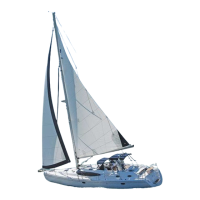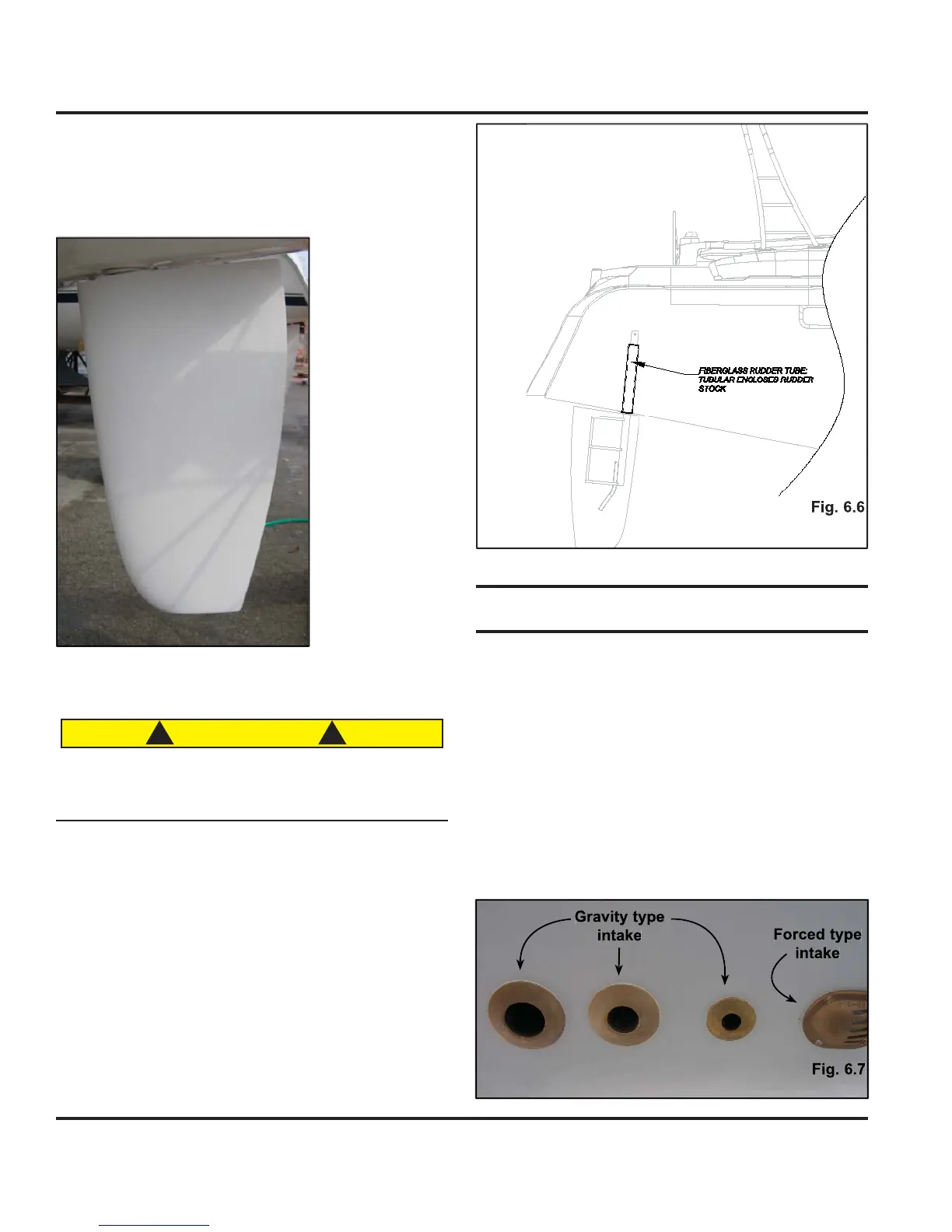nt
r
•
nderwater
ea
.4
structure. The rudder bearin
s are self lubricatin
tec
nee
e t
pe
ear
n
s w
t
a
ou
e
p sea
.
nsure to inspect the
ree and smooth operation o
the rudder stock and bearin
s at re
ular intervals.
This Fi
.
Fi
6.5
ives
ou a view at the rudder under
our boat.
our steer
n
s
stem is a ver
important part o
our
oat an
ver
important to
ou
boatin
sa
et
.
owever, a
oat
perator’s should
be prepared
or
r
r f
il
r
r
loss. That is wh
nt
r M
rin
h
a
ac
u
ru
er
s
stem that can be
purchased
or our
rr
nt m
.
ther commercial
suppliers o
er
s
m
ar s
stems at
di
erin
bene
its
and costs and
o
n
t
our own anal
sis to determine which alterna-
tive is best
or
ou
CAUTION
! !
ecause t
e
ac
up s
stem can a
so
e
ost an
o
erator must be able to sail without a rudder or oth-
rwise be prepared to assemble a makeshift rudder.
Important: Look to the Getting Underway Chapter (chapter 12)
for information about using your emergency tiller system. The
connections and use are detailed in that section.
The next Fi
ure in this section will allow
ou to observe
th
r
ti
n ill
tr
ti
n
th
r
r in
t
ll
n
our
oat.
s v
ew a
so s
ows
ou t
e upper an
lower rudder bearin
s
6.3 Seawater Intak
6.3.1 Pick Ups and Intakes
n the bottom of
our boat,
ou will find pick ups and
intakes
or the suppl
o
raw water to
our boat’s various
s
stems.
hown in Fi
. 6.7 is an example o
three t
pes o
intakes.
These intakes are the “
ravit
fed” t
pe, and the water
forced t
pe. The forced t
pe is fed b
the velocit
of sea-
water bein
orced throu
h the intake b
the boat speed.
These t
pes are alwa
s positioned with the openin
side
f the intake in the forward position. Gravit
fed intakes
are the opposite.
Fi
. 6.

